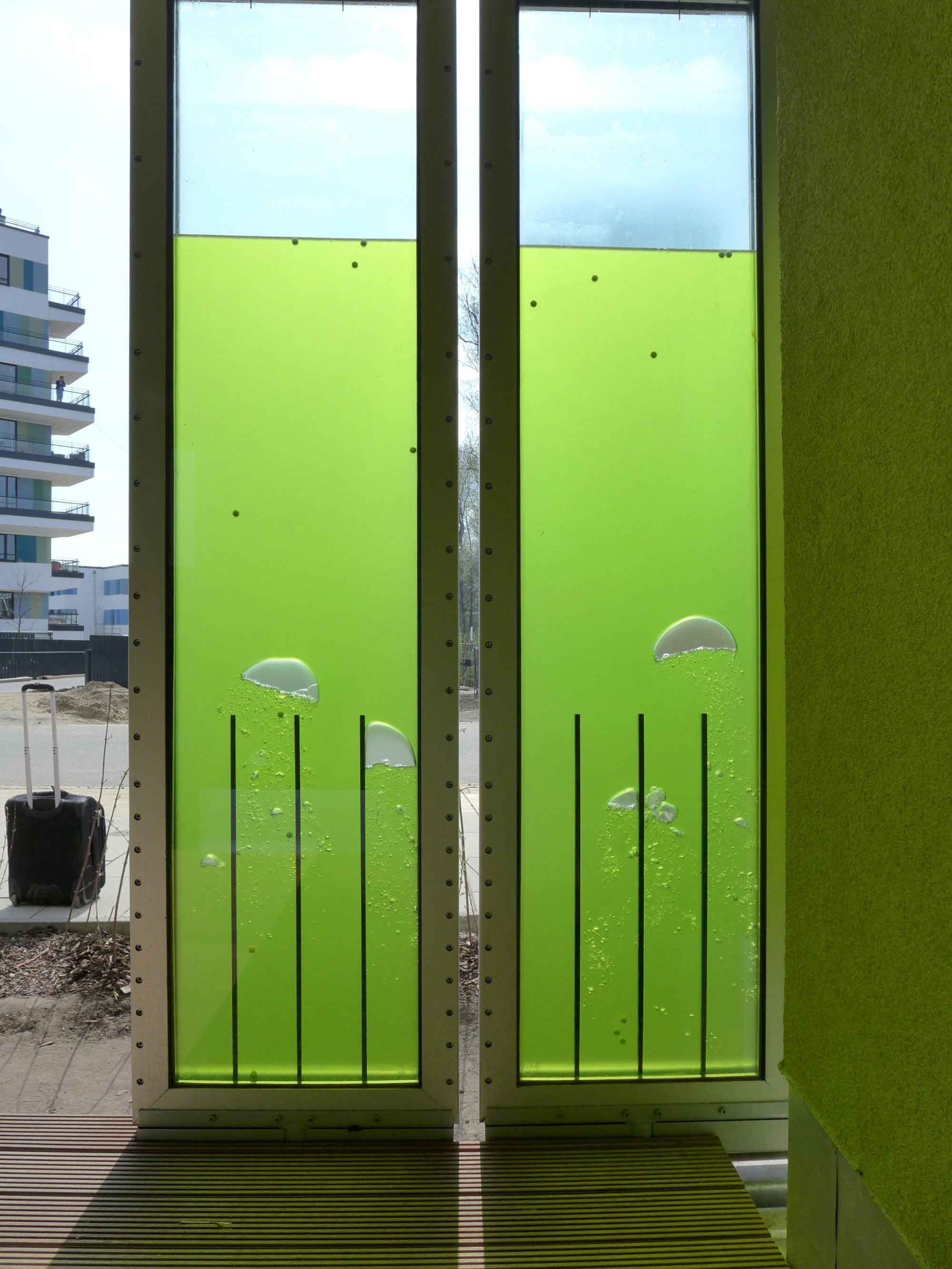This is not an early St Patrick's day image. This is an image from a Building Health Check we recently carried out near Inverness.
Streaky buildings not only look unsightly, they can indicate that your building is not preforming properly. This is not always the case though, as algae can also being used to heat your hot water.
.

.
This photo shows two common forms of algae.
The red algae is Trentepohilia Iolithus. It grows slowly on vertical walls in mild climates, usually on a shady wall. Interestingly, it grows on concrete and cement and rarely on any other materials. The spores are present in the air, floating around, until they land on a suitable wall which they start to colonise. It doesn’t need much moisture to grow, there is usually enough in the moist air of coastal climates. This kind of algae looks awful, but rarely does any harm. However, if you have a traditional stone building that has been harled, and you start to see red algae growing, its is a good indicator that the building has been covered with cement. Cement harling on stone buildings is not a good combination and is the cause of a great deal of dampness problems and stone failures.
The green algae is Chlorophyta. Like red algae, it doesn’t enjoy direct sun-light, it prefers a shady wall, but unlike the red algae, this needs a regular supply of water. You will find it where water is dripping from defective rainwater gutters, pipes or flashings. If you look at the image you will see that its is located near the ledges at the top of the wall. Green Algae is a clear indicator that walls are being saturated and there is a problem that needs to be investigated.
.

.
It not all bad news though...
In 2013, Splitterwerk Architects and engineering firm Arup unveiled what is thought to be the world's first building to be powered partly by algae.
The building uses panels, called bio-reactors, that cultivate the algae. The fermentation process generated by the algae in water generates heat which is collected and supplies the building with hot water.
.
MAAC studio are accredited conservation architects and principal designers working with traditional buildings throughout Scotland.
If you need independent advice give us a call ?


